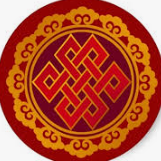Kroo Ae From Mtl Thai School
-
Recently Browsing 0 members
- No registered users viewing this page.
-
Topics
-
Popular Contributors
-
Latest posts...
-
54
-
2
-
2
-
4,635
-
5
-
30
Report Cannabis Advocates Warn of Fallout from Thailand’s New Medical Use Rule
Yea, there are plenty of people with cannabis addiction, quite a few of them in Thailand. They are - in affect - drug addicts. There isn't a Marijuana Anonymous Organization for nothing. https://marijuana-anonymous.org/ It is an addictive drug that has become a problem for a great many people.
-
-
Popular in The Pub
-





.thumb.jpeg.d2d19a66404642fd9ff62d6262fd153e.jpeg)



Recommended Posts
Create an account or sign in to comment
You need to be a member in order to leave a comment
Create an account
Sign up for a new account in our community. It's easy!
Register a new accountSign in
Already have an account? Sign in here.
Sign In Now